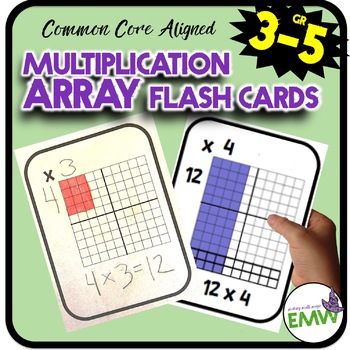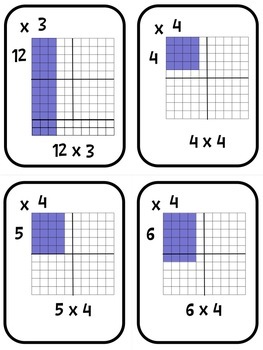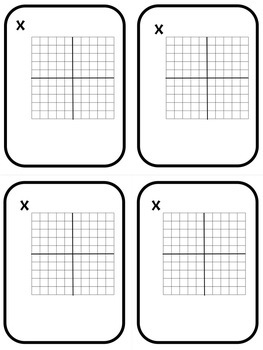Multiplication Practice Flash Cards Multiplication Facts Practice with arrays
- PDF
What educators are saying
Also included in
- This is a money saving collection of NINE of my multiplication products, click on each one to see a preview:* Array Task Cards ($3 value)* Multiplication Passport ($3 value)* Arrays Around Us ($4 value)* Multiplication Array Flash Cards ($4 value)* Multiplication Task Cards ($3 value)* Properties ofPrice $21.40Original Price $26.75Save $5.35
Description
Print these double-sided array flash cards out for a common core aligned way to help your students memorize their multiplication facts. There are blank pages for your students to fill out and create their own flash cards.
If you are looking for a Google/PowerPoint digital version, click here.
How can I use this product?
Print on card stock, cut, laminate and add to your math skills center. Or print out blank pages and have a center for your students to create their own flash cards. Can be printed grey scale.
How is this product different from the other TPT products?
This product includes blank pages of arrays so your students can make their own flash cards, which strengthens learning.
What is included?
45 Pages (2 pages of cover, copyright info, and notes)
*40 pages (4 on a page) of each multiplication fact from 1 x 1 to 12 x 12. Every other page is the answer to print on the back of each page.
*2 pages with blank arrays (four on a page)
*1 page of a rounded border if you want your students to make a cover page for their own set (four on a page).
Is this available in a bundle?
This activity is bundled with Ten Best Selling Multiplication Products for a 20% savings.
Do you have other products that are related?
Please check out all my multiplication activities!
How do I connect with Evil Math Wizard?
Be sure to follow my TPT store to receive notifications of new products and upcoming sales. New products are always 50% for the first 24 hours, so it pays to follow my store. To save more money, please leave feedback to earn TPT credits. Also visit my blog for K-5 math tips and freebies you can use tomorrow in your classroom. You can also find me on Facebook and Pinterest.
Other questions or requests?
If you have any requests or questions, please contact me through the "Product Q & A " tab below or email me at Deirdre@evilmathwizard.com.
What standards are addressed?
Common Core Standards
3.MD.5. Recognize area as an attribute of plane figures and understand concepts of area measurement.
o A square with side length 1 unit, called “a unit square,” is said to have “one square unit” of area, and can be used to measure area.
o A plane figure which can be covered without gaps or overlaps by n unit squares is said to have an area of n square units.
3.MD.6. Measure areas by counting unit squares (square cm, square m, square in, square ft., and improvised units).
3.MD.7. Relate area to the operations of multiplication and addition.
o Find the area of a rectangle with whole-number side lengths by tiling it, and show that the area is the same as would be found by multiplying the side lengths.
o Multiply side lengths to find areas of rectangles with whole-number side lengths in the context of solving real-world and mathematical problems, and represent whole-number products as rectangular areas in mathematical reasoning.
o Use tiling to show in a concrete case that the area of a rectangle with whole-number side lengths a and b + c is the sum of a × b and a × c. Use area models to represent the distributive property in mathematical reasoning.
3.MD.7. Relate area to the operations of multiplication and addition continued.
o Recognize area as additive. Find areas of rectilinear figures by decomposing them into non-overlapping rectangles and adding the areas of the non-overlapping parts, applying this technique to solve real-world problems.






